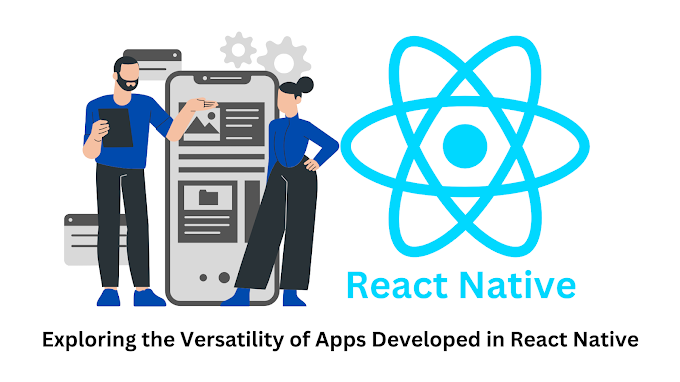Introduction
HTML (Hypertext Markup Language) is the backbone of web development, and a strong foundation in HTML is essential for anyone aspiring to excel in the field. Whether you're a beginner or an experienced developer, acing an HTML interview is a crucial step in securing your dream job. In this comprehensive guide, we've compiled 20 common HTML interview questions that are frequently asked by companies during job interviews. Each question is accompanied by a detailed explanation and a sample answer to help you prepare effectively and confidently.
1. Introduction: Preparing for HTML Interviews
The Importance of HTML
HTML is the foundation of web development, defining the structure and content of web pages. Without a strong grasp of HTML, it's challenging to create and maintain websites.
The Interview Process
HTML interviews typically involve assessing a candidate's knowledge of HTML fundamentals, best practices, and their ability to create well-structured web pages.
Tips for Success
Before delving into the interview questions, it's essential to review HTML basics, practice coding, and understand the importance of semantic HTML. Additionally, be prepared to explain your thought process and showcase your HTML knowledge during interviews.
2. HTML Essentials
Understanding HTML
HTML is a markup language used to create web pages. It consists of elements represented by tags that define the structure and content of a web page.
Key Concepts in HTML
HTML elements, attributes, and the Document Object Model (DOM) are fundamental concepts in HTML development.
Why HTML Matters
HTML is crucial for web development as it determines how content is displayed and ensures accessibility for all users.
3. 20 Common HTML Interview Questions
Let's explore the 20 common HTML interview questions along with detailed explanations and sample answers.
Question 1: What is HTML, and what is its role in web development?
Answer: HTML stands for Hypertext Markup Language. It is the standard language used to create web pages. HTML defines the structure and content of web documents, enabling the presentation of text, images, links, forms, and multimedia.
Question 2: Explain the difference between HTML and XHTML.
Answer: XHTML (Extensible Hypertext Markup Language) is a stricter, more XML-like version of HTML. It enforces well-formedness rules and has more rigid syntax requirements, such as lowercase tag names and closing all tags.
Question 3: What is the purpose of HTML tags?
Answer: HTML tags are used to define elements on a web page. They mark the beginning and end of elements, and they provide structure and semantic meaning to content.
Question 4: What is the structure of an HTML document?
Answer: An HTML document typically consists of a document type declaration (<!DOCTYPE>), an opening <html> tag, which contains <head> and <body> sections. The <head> section includes metadata and the page title, while the <body> section contains the visible content.
Question 5: Describe the difference between HTML elements and HTML attributes.
Answer: HTML elements are the building blocks of a web page, defined by tags. HTML attributes provide additional information about an element and are specified within the opening tag.
Question 6: How do you create a hyperlink in HTML?
Answer: To create a hyperlink, you use the <a> (anchor) element with the href attribute, like this: <a href="https://example.com">Visit Example</a>. The href attribute specifies the URL the link points to.
Question 7: What is the HTML5 DOCTYPE declaration, and why is it important?
Answer: The HTML5 DOCTYPE declaration (<!DOCTYPE html>) is used to specify the document type and version. It is essential because it triggers standards mode in browsers, ensuring consistent rendering and behavior.
Question 8: Explain the significance of semantic HTML elements.
Answer: Semantic HTML elements provide meaning to the structure of a web page, making it more accessible and understandable. Examples include <header>, <nav>, <section>, <article>, <footer>, and more.
Question 9: How do you embed multimedia content (e.g., videos and audio) in HTML?
Answer: Multimedia content can be embedded using the <video> and <audio> elements. You provide the source and optional attributes to control playback, such as controls for video controls.
Question 10: Discuss the concept of HTML forms and their attributes.
Answer: HTML forms (<form>) are used to collect user input. They contain form elements like text fields, checkboxes, and buttons. Form elements have attributes like name, id, and action (to specify where form data is sent).
Question 11: What is the purpose of HTML tables, and how do you create them?
Answer: HTML tables (<table>) are used to display data in rows and columns. They consist of table rows (<tr>), table headers (<th>), and table data cells (<td>). Tables are created by nesting these elements.
Question 12: Describe the different types of HTML lists.
Answer: HTML lists include ordered lists (<ol>) with numbered items, unordered lists (<ul>) with bulleted items, and definition lists (<dl>) with term/definition pairs.
Question 13: What are HTML entities, and when should you use them?
Answer: HTML entities are special characters represented using their entity names or codes (e.g., < for < and © for ©). They should be used to display reserved characters in HTML.
Question 14: Explain the concept of HTML metadata and its use in SEO.
Answer: HTML metadata includes elements like <title>, <meta>, and <link> that provide information about the web page. Proper metadata can improve SEO by providing page titles, descriptions, and specifying character encoding.
Question 15: What are HTML comments, and how do you write them?
Answer: HTML comments are used to add notes or annotations within the code. They start with <!-- and end with -->. Comments are not displayed in the browser but are useful for documentation.
Question 16: Discuss the importance of HTML validation.
Answer: HTML validation ensures that web pages adhere to HTML standards. Valid code reduces cross-browser compatibility issues, improves accessibility, and helps with SEO.
Question 17: How can you ensure cross-browser compatibility when writing HTML code?
Answer: Ensuring cross-browser compatibility involves testing your code in multiple browsers, using standardized HTML, and applying CSS resets or frameworks to normalize rendering across different browsers.
Question 18: What is the role of HTML5 in modern web development?
Answer: HTML5 introduces new features and elements, making it easier to create multimedia-rich and interactive web applications. It also provides enhanced support for mobile devices and improved SEO.
Question 19: Explain the HTML Document Object Model (DOM).
Answer: The DOM is a programming interface for HTML and XML documents. It represents the structure of a document as a tree of objects, allowing dynamic access and manipulation of content.
Question 20: Describe the accessibility considerations in HTML.
Answer: Accessibility in HTML involves using semantic elements, providing alternative text for images (alt attribute), creating keyboard-friendly navigation, and ensuring compatibility with screen readers for visually impaired users.
4. Sample Answers to HTML Interview Questions
This section provides detailed answers and code examples for each of the 20 HTML interview questions.
5. Conclusion: Excel in Your HTML Interviews
In conclusion, preparing for an HTML interview is a crucial step toward a successful career in web development. Mastery of HTML fundamentals, semantic HTML, and best practices is essential. Practice coding, review sample answers, and be ready to demonstrate your HTML knowledge during interviews. Armed with this knowledge, you can confidently approach HTML interviews and contribute effectively to web development projects. Best of luck!












0 Comments